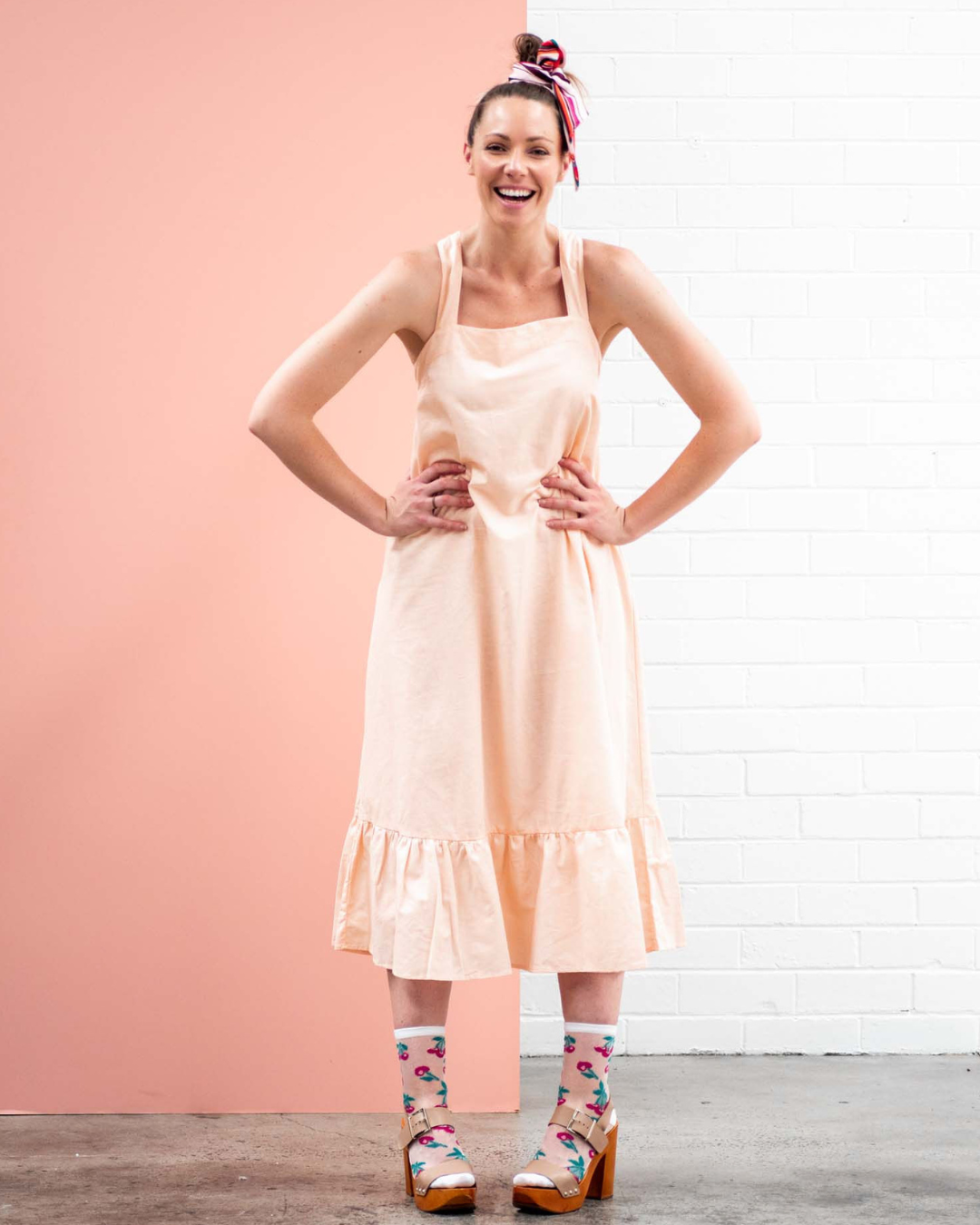Say the words Shein or Temu to any slow fashion founder and you can see the hair stand up over their entire body. The ultra-cheap prices and ultra-fast turnaround times of ultra-fast fashion giants like Shein and Temu have changed our shopping expectations and put pressure on small, sustainable brands trying to do things the right way.
The competition from these unethical and unsustainable profit-first capitalist companies creates an endless uphill battle: how do you convince someone to pay a fair price for an ethical, well-made garment when they can get a whole outfit for less than the cost of lunch?
But, like all businesses built on purposeless foundations, problems are now popping up for Shein and Temu — and profits are set to slow down.
Both Shein and Temu will increase their prices starting next week, and it’s not a minor adjustment — it’s a direct response to the incoming 120% tariff on Chinese-made goods like clothing and footwear. It's a significant cost increase, and for companies that have built their entire brands around next-to-nothing prices, it’s a serious blow — rightfully so.
And for the ultra-fast fashion customers who have become accustomed to $10 dresses, it's going to change the way they shop. As of early May, Shein and Temu will be forced to pass these new costs onto their customers. Even though they haven’t released exact price lists yet, analysts are predicting noticeable increases across the board. Insiders suggest some items could rise by as much as 50%. That $5 top might soon cost closer to $8 or $10 — and while that might still sound inexpensive, it chips away at the almost-too-good-to-be-true purchases these brands have built themselves on.
The bigger story here is that Shein and Temu’s business models aren’t built for flexibility or longevity. They rely on low-cost manufacturing (which often means unethical labour and cheap materials) and razor-thin margins combined with extreme unit volumes to survive. It's not a sustainable business model.
A sudden and dramatic change in the economic climate, like this tariff-inflicted price jump — even if prices still seem low by regular standards — disrupts their entire business. Customers who are used to low pricing might think twice, and the impulse buys that fuel the ultra-fast fashion machine could slow down.
And the 120% tariff is just the beginning. If these companies start losing their biggest advantage — unbeatable prices — their flaws will be a lot harder to ignore. Suddenly, questions like 'Who made my clothes?' and 'Why did this dress only cost $4?' might feel a little more urgent to the average shopper.
The biggest silver lining for slow fashion brands in all of this is that Temu's parent company, PDD Holdings, recently lost around $30 billion in market value, thanks largely to worries about the tariffs and rising scrutiny around ethical labour and sustainability.
For slow fashion brands — the ones who have chosen the harder path of fair wages, local production, quality materials, and mindful design — this is good news, and it's a real turning point for the industry.
It’s easy to feel powerless when you’re a small brand competing against billion-dollar giants, but this shift shows something important: fast fashion’s model isn’t sustainable. It’s deeply vulnerable to outside forces like tariffs, legislation, and public opinion.
With prices rising, Shein and Temu lose their advantage and become the online version of those $2 bargain retail stores that have become the 'last resort' when consumers can't find anything better at the tenth hour. And then, alternatives that offer something fast fashion never can — authenticity, quality, and values — become the go-to. (That's the pipe dream, isn't it?)
For now, this moment of instability in the fast fashion world is a rare opportunity — but it needs to be seized thoughtfully.
If you're running an ethical, sustainable, handmade, circular, or slow fashion brand, here are three ways you can empower yourself and your business to turn this news into real growth.
1. Tell your pricing story loud and clear.
Now is the time to explain why your prices are what they are — and what value customers are really getting when they buy from you. Break down the true cost of ethical production, fair wages, and quality fabrics. Transparency wins trust.
2. Lean into education and advocacy.
Consumers are becoming more aware, but they still need help connecting the dots. Use the platforms and channels you have — like your email list, your Instagram, your packaging — to share facts about the hidden costs of fast fashion. Position yourself as not just a brand, but a voice for a better fashion future.
3. Focus on community and connection.
Fast fashion is faceless. Small brands have heart. Double down on building genuine relationships with your customers. Share behind-the-scenes glimpses of your process, introduce your makers (and if that's 'just you', own it), show your struggles and triumphs. Authenticity is your superpower.
Fast fashion’s dominance has always seemed inevitable — but it’s not. It’s built on weak foundations, and when pressure mounts, things start to fall apart — and there's no purpose to pull it back together.
For every slow fashion brand out there fighting the good fight: hold your ground. Stay true to your values. The world is changing, and there’s real hope that ethical, sustainable fashion will finally have the space to thrive (I see it every day inside my Slow Fashion Lab).
The future of fashion is slow, intentional, and full of purpose — and we’re just getting started.
Claire x

Sources: ABC News, CNN Business, and the New York Post.



